The Aztec empire was powerful and diverse, as seen in the History of the Aztecs Timeline. The Aztecs ruled most of the land that is now Central Mexico. Their centre of power was the Valley of Mexico. Much of what we know about the Aztecs’ early history is rooted in mythology; Nahuatl was the language of the Aztecs and many of their neighbours.
Timeline summary of key events in Aztec history:
I. Mythical Era: Migration from Aztlán begins
II. Temporary settlements at Culhuacán and Chicomoztoc
III. Conflict at Coatepetl and settlement at Chapultepec
IV. Founding of Tenochtitlán
V. Formation of the Triple Alliance
VI. Arrival of Hernán Cortés.
VII. Fall of Tenochtitlán
Explanation by stage of the timeline in the history of the Aztec empire
I. Origins in Aztlán (Mythical Era)
The Aztecs believed they originated from Aztlán, a northern island homeland shrouded in mystery. Scholars suggest Aztlán was located north of the Valley of Mexico. The Aztecs were a migratory tribe composed of seven distinct groups, journeying south in search of their prophesied land.
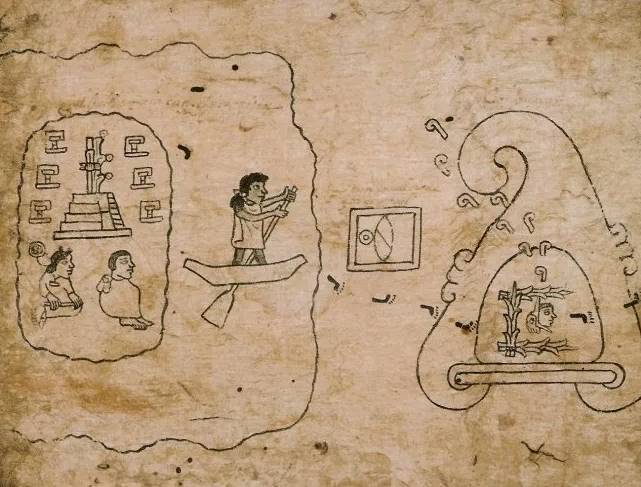
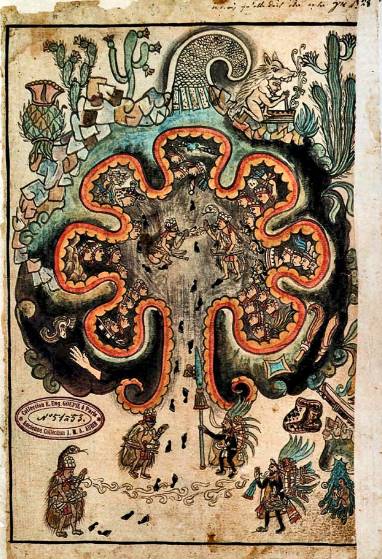
II. Early Stops: Culhuacán and Chicomoztoc.
During their migration, the Aztecs paused at Culhuacán (“curved mountain”) and Chicomoztoc (“place of seven caves”). These locations are believed to lie northeast of the Valley of Mexico.
This period was marked by internal conflicts, as the tribe struggled to unify under the leadership of Huitzilopochtli, who would later be deified as their chief god.
III. The Conflict at Coatepetl
The Aztecs faced internal divisions, including a significant clash at Coatepetl. According to legend, Huitzilopochtli personally defeated the goddess Coyolxauhqui in battle, dismembering her body.
This pivotal event inspired the creation of the Templo Mayor in Tenochtitlán, where a statue of Coyolxauhqui’s dismembered form was later discovered by archaeologists.
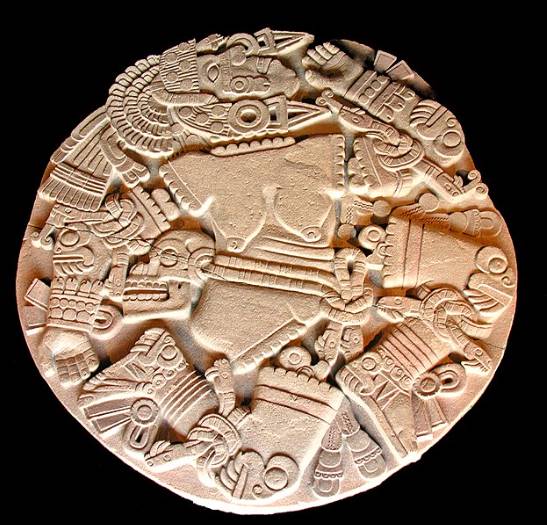
IV. Settlement at Chapultepec and Exile
Arriving in the Valley of Mexico, the Aztecs settled in Chapultepec, only to face attacks from neighbouring city-states. After the death of Copil, a rival leader, the Aztecs fled to the swampy lands of Lake Texcoco. According to legend, they saw an eagle perched on a cactus, a divine sign that led them to found Tenochtitlán in 1325 AC.
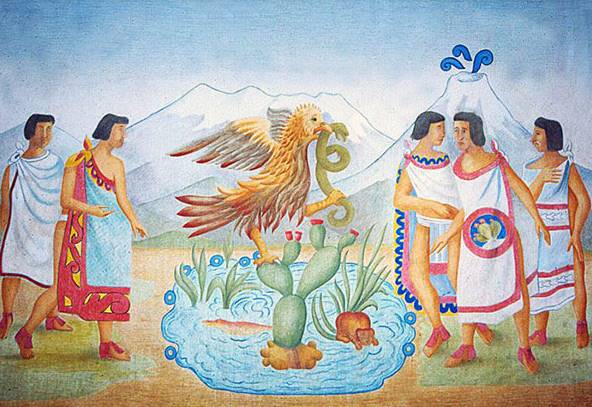
V. Formation of the Triple Alliance
In 1426 AD, the Aztecs allied with Texcoco and Tlacopan to create the Triple Alliance, defeating the Tepanecas after a 114-day siege. Leaders such as Itzcoatl, Moctezuma Il huicamina and Tlacaelel played key roles in this strategic alliance, which allowed the Aztecs to expand their empire through warfare, marital alliances and technological advances.
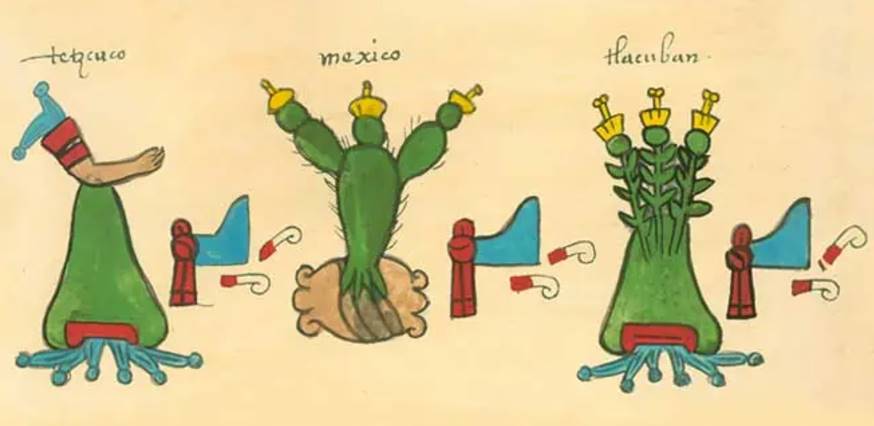
VI. Expansion and Internal Challenges
The Aztecs launched military campaigns to expand their empire, subjugating tribute-paying cities and establishing long-distance trade routes. However, internal challenges persisted:
- Rebellions arose under weak rulers.
- Groups like the Tlaxcalans and Tarascans resisted Aztec control.
- Strict laws imposed by Montezuma Xocoyotzin exacerbated tensions with subjugated cities.
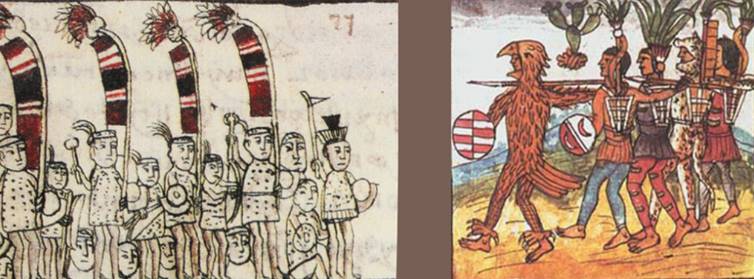
Break point in History of the Aztecs Timeline
VII. Arrival of the Spanish
In 1519 AC, Hernán Cortés arrived in the Valley of Mexico. Some Aztecs believed Cortés to be the returning god Quetzalcoatl, based on a prophecy. Montezuma II sent gifts to Cortés, hoping to establish peace, but these offerings encouraged the Spanish to march on Tenochtitlán. Cortés allied with Aztec enemies, including the Tlaxcalans, and advanced toward the capital. You can consult: List of Aztec emperors
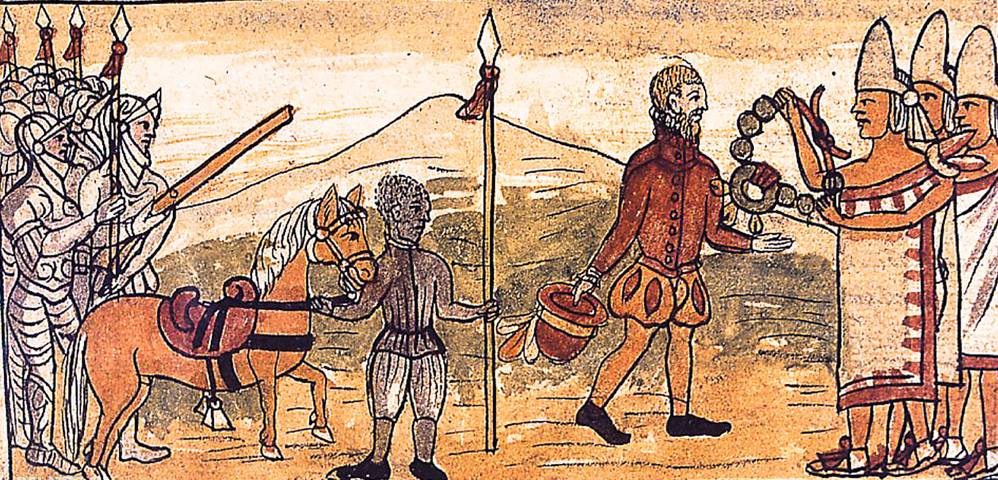
VII. The Fall of Tenochtitlán
In 1521 AC, after months of siege and devastating outbreaks of smallpox, Tenochtitlán fell to the Spanish. The city’s destruction marked the end of the Aztec Empire. Cuauhtémoc, the last Aztec ruler, was captured and executed. On the ruins of Tenochtitlán, the Spanish built Mexico City, ushering in a new era of colonization.
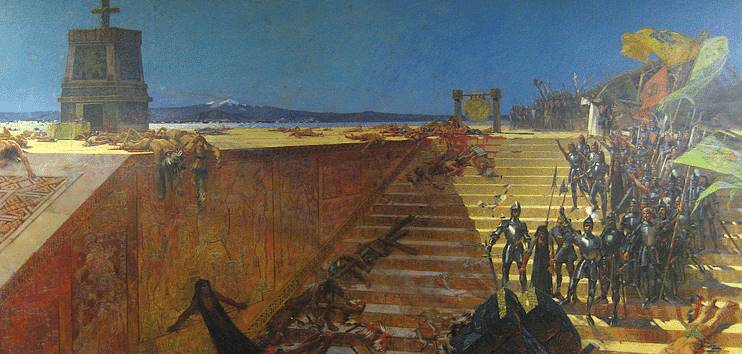
Thank you very much for having read our History of the Aztecs Timeline, We invite you to continue browsing our site to be fascinated by this incredible civilization.
The History of the Aztecs Timeline: Key Facts and Events
- According to legends, the Aztecs originated from a region known as Aztlán.
- The Aztecs referred to themselves as Mexica and were a mix of various ethnic groups.
- Enemies drove the Aztecs to an island in Lake Texcoco, in 1325, where they founded Tenochtitlán.
- The Aztecs admired the Toltecs and Teotihuacán as models of cultural excellence and nobility.
- The ruler of the Aztecs was the tlatoani
- Another important Aztec official was the cihuacóatl
- The Aztecs established the Triple Alliance alongside the city-states of Texcoco and Tlacopan.
- Cities that were conquered were required to pay tribute to the Aztecs.
- The Aztecs believed in signs and omens. Omens preceded the arrival of the Spanish.
- Aztec tribute demands made conquered cities more willing to help the Spanish.
- Tenochtitlán was captured by the Spanish on August 13, 1521. This marked the collapse of the Aztec Empire.



